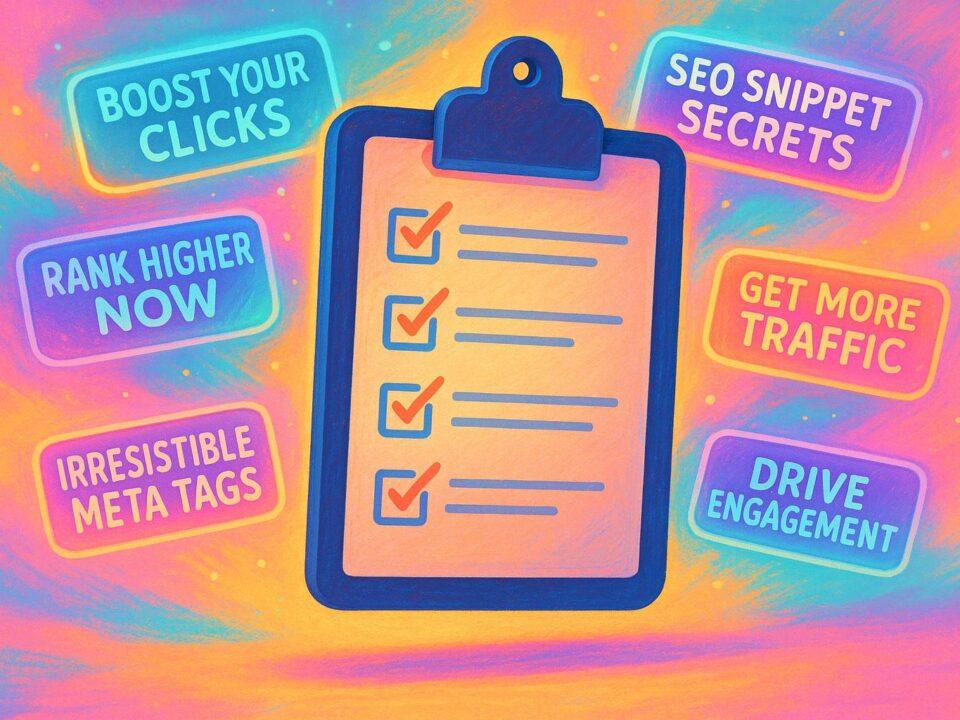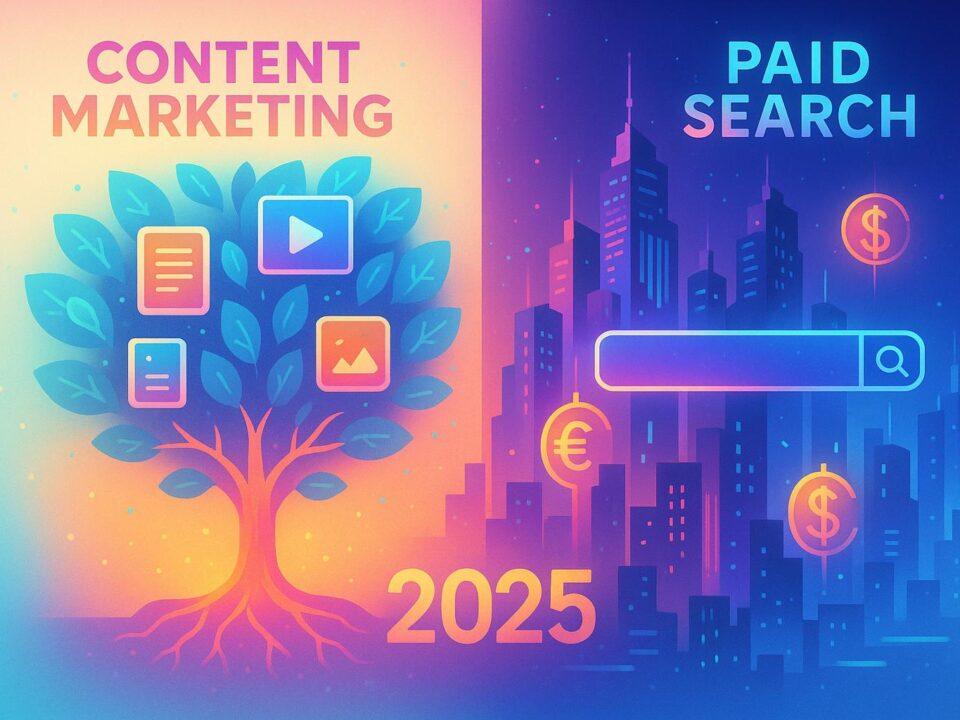Content marketing helps businesses connect with people by providing useful and engaging content instead of interrupting them with ads. Here’s why it matters:
- Trust and Authority: 61% of consumers recommend brands they trust, and 48% of decision-makers work with companies after engaging with their content.
- Better Results: It generates 3x more leads and costs 62% less than traditional marketing.
- Changing Trends: Short-form videos and user-generated content are becoming more popular in 2025.
- Proven Impact: 96% of B2B buyers review content before purchasing, and 50% of marketers plan to increase their budgets for it.
In short, content marketing builds trust, educates audiences, and drives long-term growth. It’s not just a strategy – it’s essential for modern businesses.
The Importance of Content Marketing
Content Marketing Fundamentals
Content marketing shifts the focus from intrusive ads to delivering information that genuinely benefits and engages customers [3]. This strategy isn’t just about selling – it’s about building relationships by addressing what your audience truly needs.
“Content marketing is the strategic creation and distribution of valuable, relevant content designed to attract and engage your target audience. Unlike traditional advertising, which pushes a message to consumers, content marketing pulls them in by offering something they genuinely find useful.” – American Marketing Association [4]
Key Elements
Successful content marketing relies on a few essential building blocks that work together to deliver value:
| Content Type | Purpose | Common Formats |
|---|---|---|
| Educational Content | Solve problems and inform | Blog posts, how-to guides, tutorials |
| Thought Leadership | Build authority and trust | White papers, industry reports, expert interviews |
| Entertainment Content | Engage and connect | Videos, podcasts, interactive content |
| Reference Materials | Provide lasting value | eBooks, templates, resource libraries |
It’s no surprise that 97% of marketers incorporate content marketing into their strategies [3], with 91% of B2B marketers using it to connect with their target audiences [5]. These elements underscore why content marketing consistently delivers better results than traditional approaches.
Comparison with Other Methods
What makes content marketing stand out from conventional marketing techniques? Let’s break it down:
| Aspect | Content Marketing | Traditional Marketing |
|---|---|---|
| Approach | Invitation-driven | Interruption-based |
| Cost Efficiency | 62% less expensive [6] | Higher cost per lead |
| Lead Quality | Generates 3x higher-quality leads [6] | Often produces lower-quality leads |
| Timeline | Focuses on long-term relationships | Emphasizes short-term campaigns |
| Target Reach | Tailored to specific audiences | Broad, general reach |
| Measurement | Tracks engagement, conversion, and loyalty | Relies on immediate response rates |
These distinctions highlight why content marketing is often the smarter choice for businesses looking to build deeper connections with their audiences.
The impact of content marketing is clear: 96% of B2B buyers review thought leadership content before making purchase decisions [8]. With 50% of marketers planning to increase their content marketing budgets [7], it’s evident that modern consumers expect high-quality content from brands they trust. This shift in expectations cements content marketing’s role as a powerful tool for fostering meaningful relationships and driving long-term business success.
Main Advantages
Content marketing offers measurable, long-lasting benefits that surpass traditional advertising. By building trust, it not only strengthens a brand’s authority but also delivers high-quality leads and a strong return on investment (ROI).
Expert Status
According to the 2023 Edelman Trust Barometer, 81% of consumers prioritize brand trust [10]. This highlights the importance of creating meaningful, impactful content.
“Mediocre content will hurt your brand more than doing nothing at all.” – Joe Pulizzi, Content Marketing Institute [11]
Here’s how content marketing builds authority:
| Authority-Building Element | Impact on Business |
|---|---|
| Thought Leadership Content | 48% of companies report gaining business after prospects engage with their thought leadership [9] |
| Data-Driven Content | 70% of consumers prefer learning about brands through articles rather than ads [10] |
| Expert Collaboration | 75% of decision-makers trust brands that collaborate with industry experts [15] |
By establishing expertise, businesses not only solidify their credibility but also attract leads that are highly relevant to their services.
Quality Lead Generation
Content marketing excels at drawing in high-intent leads – individuals actively looking for solutions. Compared to traditional marketing, it generates three times more leads while costing 62% less [12].
Take Marcus Sheridan’s River Pools and Spas as an example. By answering common customer questions through detailed blog posts, the company transformed into a multimillion-dollar business, generating over $2 million in sales [13].
Additional insights include:
- 70% of B2B marketers report improved engagement and lead generation through content marketing [14].
- Companies publishing 16+ blog posts monthly generate 3.5 times more traffic than those posting less than four [10].
- 42% of B2B buyers consult 4–6 different sources during their research process [15].
This demonstrates how strategic content creation can significantly boost both visibility and lead quality.
Cost-Effective Results
One of content marketing’s standout benefits is its cost-efficiency. For instance, email marketing delivers $38 in ROI for every $1 spent [18]. Unlike traditional campaigns, content continues to provide value long after its initial release.
| Metric | Content Marketing | Traditional Marketing |
|---|---|---|
| Lead Generation Cost | 62% lower [17] | Higher baseline |
| Lead Quality | 3x more leads [17] | Lower baseline |
| Long-Term Value | Ongoing engagement | Limited to campaign duration |
| Measurement Capability | Detailed analytics | Limited tracking options |
A great example of this is VividBoard. By optimizing their landing page content based on audience insights, they increased their conversion rate from 2% to 27%, achieving a staggering 1,250% improvement [13].
With its ability to drive demand, generate leads, and deliver lasting value, content marketing remains an essential strategy for sustainable business growth. In fact, 76% of marketers confirm its effectiveness in achieving these goals [16].
sbb-itb-16c0a3c
Case Studies
These real-world examples highlight how well-crafted content marketing strategies can fuel brand growth and attract high-quality leads.
Brand Growth Example
Take Duolingo as a standout case. Their content marketing strategy on TikTok blends education with humor, creating a unique and engaging presence. The results in 2024 speak for themselves:
| Metric | Achievement |
|---|---|
| Monthly Active Users | 100 million |
| Daily Active User Growth | 59% increase |
| Revenue Growth (Q2 2024) | 41% increase |
This success boils down to Duolingo’s deep understanding of its audience. By creating content that entertains while educating, they managed to resonate across social media and drive significant engagement. Their approach proves that even educational content can be fun and highly effective [19].
Lead Generation Example
Fanatics took a different route, focusing on a content marketing campaign that redefined their digital footprint. The campaign revolved around three key pillars:
- Timely Sports Content: Articles synced with major sporting events and seasons to capture attention.
- Evergreen Historical Content: In-depth sports history pieces that remain relevant over time.
- Responsive Coverage of Trending Topics: Fast-turnaround content on breaking news, player updates, and big games.
The outcome? Remarkable results:
| Performance Metric | Result |
|---|---|
| Organic Search Traffic | 1,100% increase |
| Ranking Keywords | 230% growth |
| Media Coverage | Featured on USA Today, MSN, Yahoo Sports, The Score |
Implementation Steps
Building an effective content marketing strategy requires thoughtful planning and a step-by-step approach to execution.
Target Audience Research
1. Analyze Your Current Customer Base
Start by examining your existing customers. Look into their behaviors, preferences, and how they engage with your content. Tools like Google Analytics can provide insights into demographics, interests, and interaction patterns [20].
2. Create Detailed Buyer Personas
Develop comprehensive buyer personas that outline key details such as demographics, content consumption habits, pain points, and motivations for purchasing.
A great example of this in action is Netflix. They use viewer data to shape their content offerings and recommendations, successfully connecting with niche audiences like anime fans [21].
When you understand your audience deeply, you can choose content types that align with their preferences and your broader marketing goals.
Content Type Selection
Choosing the right content formats is critical for resonating with your audience and making the best use of your resources. Here’s a quick breakdown of some popular formats:
| Content Format | Statistic | Best Use Case |
|---|---|---|
| Blog Posts | 55% of marketers say they perform best [22] | Sharing detailed information and boosting organic search |
| Video Content | Over 50% of consumers prefer videos [22] | Great for visual demonstrations and creating emotional connections |
| Infographics | 30x more likely to be read than text articles [22] | Perfect for simplifying complex data |
When selecting content types, consider these key factors:
- Your available resources and budget
- The technical skills of your team
- Preferred distribution channels
- Goals for the content (e.g., brand awareness, education, conversions)
Content Calendar Creation
Once you’ve identified the content types, organize them into a content calendar to ensure a steady flow of quality content. A well-planned calendar helps maintain consistency and balance in your publishing schedule.
1. Establish a Template
Your content calendar should include:
- Publishing dates
- Content formats
- Target keywords
- Assignment statuses
- Distribution channels
2. Plan a Balanced Content Mix
Incorporate a variety of content to keep things fresh and relevant:
- Timely content: Cover current industry news or trends.
- Evergreen content: Create resources like how-to guides that remain useful over time.
- Seasonal content: Include pieces tied to holidays or specific events.
“A content calendar is a constantly evolving document containing your planned and scheduled social media posts for all your social channels. It should be an extension of your content strategy; a tool that helps ensure a good mix of content, and supports social media goals and objectives.” – Hootsuite Education [24]
3. Track Progress
Use project management tools like Notion or Trello to keep tabs on your content. For instance, Notion offers templates that let you monitor content through various stages, while also providing flexibility with timelines and updates [23].
This structured approach ensures your content strategy stays on track, delivering value to your audience while achieving your marketing objectives.
Conclusion
Content marketing is a powerhouse for modern businesses. Just consider this: 87% of B2B marketers say it boosts brand awareness, and 74% report generating leads through it [1]. With social media users spending an average of 2 hours and 19 minutes daily across seven platforms, the opportunities for distributing content are immense [2]. Even better, nearly half of B2B marketers (49%) directly link content marketing to revenue growth, and a staggering 83% of purchase decisions are made before buyers even contact a business [1][5].
The numbers speak for themselves. Content marketing builds trust and fosters engagement, two key drivers of sustainable growth. Decision-makers are increasingly drawn to thought leadership, with 51% engaging more with this type of content since the pandemic [5]. Educational content also plays a major role, as 75% of consumers trust brands that provide it, and 91% of B2B marketers actively use content marketing to connect with their audience [5][26].
Looking ahead, the future of content marketing is bright. With 39% of enterprise marketers planning to increase their budgets in 2025 compared to 2024, it’s clear that businesses see content as a cornerstone of building strong customer relationships and driving growth [25].
In today’s competitive landscape, content marketing isn’t just an option – it’s a necessity. Companies that consistently produce meaningful, relevant content outperform their peers, making it an indispensable part of any successful marketing strategy. Investing in content now lays the foundation for long-term growth and success.
FAQs
How does content marketing help build trust and establish authority for your brand?
Content marketing allows brands to earn trust and showcase their expertise by consistently providing useful and relevant content that meets the needs of their audience. Whether it’s expert advice, practical tips, or solutions to everyday challenges, this strategy shows that the brand understands and cares about its customers’ concerns.
By doing so, brands build genuine connections with their audience, which fosters transparency and trustworthiness. Over time, this consistent effort not only helps the brand stand out from competitors but also strengthens customer loyalty, making it a trusted name in its field.
How does content marketing compare to traditional marketing in terms of cost and lead quality?
Content marketing offers a much more budget-friendly alternative to traditional marketing methods. It costs about 62% less but can deliver three times as many leads. Traditional marketing often centers on short-term campaigns and tends to attract lower-quality leads. In contrast, content marketing focuses on creating trust, engagement, and lasting connections with your audience. This approach not only generates higher-quality leads but also increases the chances of conversions and long-term loyalty. Over time, content marketing proves to be a smarter investment, offering greater value and a stronger return on investment (ROI).
Why should businesses include trends like short-form videos and user-generated content in their content marketing strategies?
In today’s fast-moving digital landscape, tapping into trends like short-form videos and user-generated content (UGC) can make a big difference for businesses aiming to stay ahead. Short-form videos are incredibly effective at grabbing attention quickly. Their bite-sized format resonates with audiences looking for quick, easy-to-consume content, often resulting in higher engagement compared to longer videos.
On the flip side, UGC brings a level of realness that polished brand ads just can’t replicate. When customers share their genuine experiences, it creates a sense of trust and relatability. People naturally connect more with content from their peers, which helps build brand loyalty and can even lead to more sales. Businesses that overlook these trends risk losing ground to competitors who are already using them to strengthen connections with their audiences and achieve stronger results.







